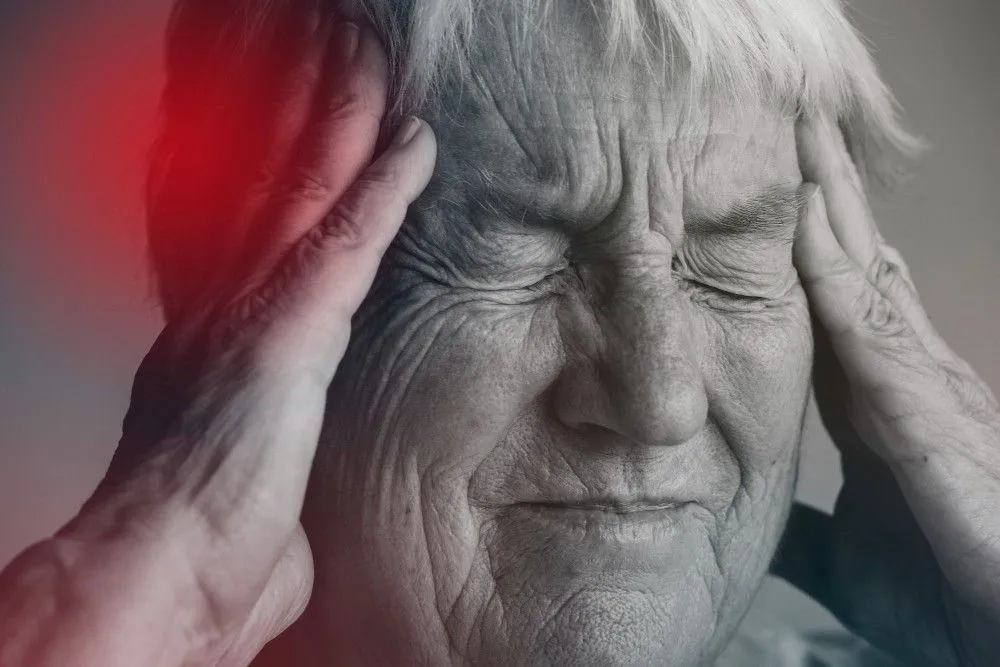Generally, cells in our body age and die and are replaced by new ones. But with cancer, this cycle is disrupted. Brain tumor cells grow, and unlike other normal cells, they don't die. Eventually, cancerous cells keep growing, and more cells are added to this abnormal mass of tissue. Similarly, brain cancer is an abnormal growth of tissue in the brain or spine that can disrupt the proper functioning of the central nervous system. Read more to get detailed information about brain tumor symptoms, causes, and treatment.
Types of Brain Tumors
When diagnosed with brain cancer, learning in detail about it can help in choosing the right neurosurgeon and deciding on the brain tumor treatment. Most hospitals across the globe use World Health Organization (WHO) or National Cancer Institute classification system. Depending on the origin of cancer cells and how they behave, WHO classifies from the benign tumor (least aggressive) to malignant (most aggressive). Depending on the cell activity and how abnormal the cancerous cells are, the condition is also graded.
Depending on where the cancerous growth has started and spread, there are 2 general groups:
Primary
Cancerous cells that begin in brain tissue are known as primary brain tumors. They can be benign (non-cancerous) or malignant (cancerous). Most of the primary brain tumors are named after the part of the brain or the type of brain cell from which they originate.
Benign
They are the least aggressive type and originate from cells within or surrounding the brain. They do not contain cancer cells and grow very slowly.
Malignant
They contain cancer cells and are life-threatening as they grow rapidly and invade brain tissue
Secondary
When cancerous growth originates from another part of the body, it is known as a Metastatic or Secondary tumor. Such cases are more aggressive as compared to the Primary. When cancer cells spread to the brain from another tumor, the process is called metastasis. Treatment for a metastatic brain tumor depends on where cancer originated and how far it has spread. It also depends on the patient's age, type, size, and location of the cancerous mass, general health, and response to previous treatment.
Tumors are typically graded on the basis of how normal or abnormal the cells are. The grade gives an idea about the rate of growth and spread. Basis the grade of the cancerous cells, brain tumor treatment is planned.
- Grade 1 means the cells are growing very slowly. Long-term survival of the patient is very likely.
- Grade 2 means the growth of tumor cells is slow. However, the tumor may spread to nearby tissues or has a higher probability of recurrence even after treatment.
- Grade 3 means the brain cancer is actively growing and spreading to nearby tissues. This type of tumor is likely to have a recurrence.
- Grade 4 means the cancerous cells are rapidly growing and spreading. The cell structure is also very abnormal.
Remember: In some cases, the grade may change if the treatment is not started at right time. A lower-grade tumor may get converted into a higher-grade tumor. For an understanding of a common man, the treating doctor would typically classify in the following categories:
-
Astrocytomas - Cancer arising from the cerebrum, the largest part of the brain, is known as astrocytomas. They can be of any grade. Seizures or abnormal changes in behavior are typical symptoms. Grade 4 astrocytomas are also known as Glioblastomas. Almost 80% of cases in adults are Glioblastomas.
-
Meningiomas - Most common type of brain cancer in adults. Commonly seen in adults in the age group of 40 to 70 years. Meningiomas arise from the layer of tissue covering the brain and spinal cord and are usually benign and slow growing. Meningiomas can be in grades 1,2 or 3. Typical symptoms are related to the compression of adjacent tissues, affecting cranial nerves and blood vessels.
-
Schwannoma or Acoustic Neuroma - The cancer cells that arise from the protective layer around nerve fibers cause an acoustic neuroma. Commonly seen in the age group of 40 to 70 years. Typical brain tumor symptoms include hearing loss, vertigo, and lack of coordination.
The above-mentioned are commonly found brain cancers in adults. In addition, a few rare types. This includes pituitary tumors and ependymomas.
Brain Tumor Causes
The exact cause of brain tumors is yet unknown! However, there are several risk factors that increase a person's chances of contracting these cancerous cells. The risk factors include:
-
Age: They are common in children and older individuals (60+ years of age).
-
Gender: Men have an increased risk of brain cancer. However, there are a few types that are found more in women.
-
Genetic Background: There are a few of them that show increased linkage to genetic inheritance.
-
Environmental Exposure: This is one of the most crucial risk factors that lead to brain cancer. Exposure to chemicals like solvents, and pesticides (through inhalation or indirectly by consuming them) either at home or at work is one of the primary risk factors. Other environmental causes like allergens, viruses, and infections might also lead to this disease.
-
Exposure to Electromagnetic and Ionising Radiations: EM radiations that emit from cell phone use or power lines have not yet been proven to increase the risk of getting this cancer disease; however it is controversial. Exposure to ionizing radiations like X-rays also increases the chances.
-
People with the compromised immune systems such as those suffering from AIDS are more likely to have this condition
-
Radiation Therapy to the head received previously for any treatment can increase the risk of brain cancer
Did you know? Cell phone usage DOES NOT increase the risk of brain tumors. There has been no scientific proof. Although the usage of cell phones has grown drastically in the last 10 years, the incidence of brain tumors has not seen a significant rise.
Brain Tumor Symptoms
Symptoms of brain tumors vary according to the type and location of the cancerous mass. In some cases, there are minimal or no visible symptoms, until the mass becomes large in size and starts making its way to other parts of the brain and alters their functioning. In symptomatic cases, the beginning is very gradual and may be missed sometimes. While in other cases, these symptoms appear more frequently and can be confused with symptoms of a stroke. The only way to be assured about the reason behind these symptoms is to undergo diagnostic testing after consultation with an experienced neurologist.
Common Brain Tumor symptoms include:
- Headache
- Weakness
- Clumsiness
- Difficulty walking; loss of balance
- Seizures
Other signs and symptoms include:
- Changes in concentration, memory, attention, or alertness
- Nausea or vomiting, especially early in the morning
- Abnormalities in vision; blurred vision
- Headaches that are severe in the morning
- Weakness or paralysis on one side of the body
- Difficulty in thinking, speaking, or recalling words
- Gradual changes in an intellectual or emotional capacity
Diagnosis of Brain Tumor
Diagnosis can be a complicated process. Making a decision about the treatment process can also be overwhelming. It can be very confusing and frightening given the short time to make critical decisions.
It may be diagnosed and evaluated using one or more of the following tests:
-
MRI: Magnetic resonance imaging (MRI), is a medical imaging technique used in radiology to visualize the internal structures of the body in detail.
-
CT: Computed tomography (CT scan) is a medical imaging procedure that utilizes computer-processed X-rays to produce tomographic images or 'slices' of specific areas of the body. Tomography refers to imaging by sections or sectioning.
-
PET: Positron Emission Tomography (PET Scan) is a unique type of imaging test that helps doctors see how organs and tissues inside the body are actually working. It helps to differentiate between new growth and cells killed by radiation.
-
Biopsy through surgery or Stereotactic biopsy
Brain Tumor Treatment
The treatment can be based on different factors:
- Age, overall health, and medical history
- Type, location, and size
- Nature of recurrence
- The tolerance level of the patient to certain medications, procedures, or therapies
Specialists for treatment include neurosurgeons, medical oncologists, and radiation oncologists. In addition to the specialist, the team may include other professionals such as a nurse, dietitian, mental health counselor, physical therapist, occupational therapist, and/or speech therapist.
Treatment for the primary brain tumor may include:
-
Steroids: Steroids are often used to reduce the buildup of fluids around a tumor (edema) sometimes caused by the brain tumor or other treatments. Steroids can temporarily relieve signs (eg, edema), improve neurological symptoms, promote a feeling of well-being, and increase appetite.
-
Surgery: Surgery usually is the first step in treating most benign and many malignant cases. It is often the preferred treatment when a tumor can be removed without any unnecessary risk of neurological damage.
The most common types of Surgeries are listed below:
Biopsy, Craniotomy, Craniectomy, Debulking, Complete Removal, Shunt, Ommaya Reservoir, Skull Base Surgery, Transsphenoidal Surgery, and Laser Interstitial Thermal Therapy (LITT)
Get Brain Tumor Surgery Cost in India from Top Hospitals - FREE
Treatments for High-Level Tumors
Usually, tumors that are not aggressive can be treated with watchful monitoring or surgery alone. Grade 2 cases are monitored closely after surgery to make sure there is no recurrence.
Malignant cases are more difficult to remove and need treatments high-level treatment like radiation therapy, chemotherapy, etc. Most of the treatments are intended to prolong and improve life as long as possible as microscopic cancer cells can remain even after surgery and will eventually grow back.
High-Level Brain Tumor treatments are
-
Radiation therapy: X-rays or other forms of radiation are used to destroy cancerous cells or their growth
-
Chemotherapy: In this, certain drugs are used to kill rapidly dividing cells. They can be consumed orally or through IV
-
Targeted therapy: In this, a specific element of a cell is focussed, such as molecules or pathways required for cell growth in order to use them as a target
-
Stereotactic Radiosurgery: As radiation cannot tell the difference between abnormal and healthy cells so it impacts both. That's why scientists developed SRS, a special type of radiation that allows precisely focused, high-dose x-ray beams to be delivered to a small, localized area of the central nervous system. Because SRS focuses the beams more closely on the tumor than conventional radiation, it can deliver a higher, more effective dose of treatment to the site.
-
Proton Therapy: In proton therapy, beams of fast-moving protons are used to destroy abnormal cells. In this higher doses of radiation are delivered to the mass with limited damage to the surrounding healthy tissue and/or organs.
Latest Technologies for Brain Tumor Treatment
- Brain Suite: It is one of a kind, the latest technology used around the globe. It is an advanced operating theatre with the capability of intra-operative MR imaging and MR-guided surgery. Surgeons can perform a high-resolution MRI during the surgery to assess the degree of tumor removal as well as avoid harming healthy tissues.
-
Endoscopic Neurosurgery Theatre: Endoscopy means looking inside and typically refers to looking inside the body for medical reasons using an Endoscope an instrument used to examine the interior of a hollow organ or cavity of the body. Endoscopic Neurosurgery is done with state-of-art operation theatre for endoscopic brain and spinal surgery. It uses a slender fiber-optic camera to improve visibility and guide access to hard-to-reach tumors.
-
Cyberknife: A revolutionary treatment for cancer patients, Cyberknife Robotic Radiosurgery System is the world's first such system, designed to treat tumors of all kinds anywhere in the body. With its unique precision and accuracy, it treats both static and moving Lesions and tumors, giving clinicians the power to treat patients non-invasively, with successful outcomes. It has high accuracy & efficacy for treating tumors in the central nervous system. CyberKnife treats intracranial (skull base) benign and malignant cases. It is used for spinal abnormalities and lesions of the cervical, thoracic, and lumbar regions. CyberKnife is less risky than traditional surgery it can be a suitable option for the elderly. Age is not a crucial factor in excluding patients from CyberKnife treatments.
-
Synergy Linear System: This is a top-end, highly versatile Linear accelerator designed for use in critical areas, such as the brain and spine. Clinical trials show high accuracy. Combined with a robotic couch, it is capable of finely calibrated movement. This system is a highly effective tool for Radiosurgery of the nervous system.
Brain Tumor Survival Rate
The major factors that influence the survival of the brain tumor are its type, location, whether it can be surgically removed or reduced in size, the patient's age, and other medical problems.
The long-term survival rate (greater than five years) for people with primary brain cancer is promising with aggressive surgery, radiation, and chemotherapy. These treatments and rehabilitation counseling improve the quality of life to a great extent.
Read about: Brain Tumor - Frequently Asked Questions For more information and FREE personalized guidance, talk to Credihealth medical experts.

Reviewed by







